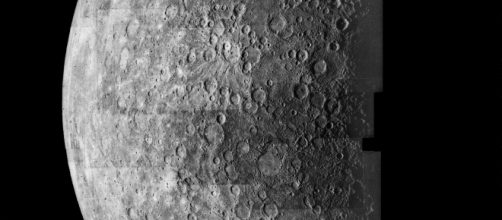The BepiColumbo, a Euro-Japanese spacecraft, launched from French Guiana on Friday October 18, starting its seven year journey to Mercury, the closest planet to the sun. The ship's path will fly by Earth once, Venus twice, and Mercury six times. The multiple flybys slow the shuttle down enough to be pulled in by Mercury’s gravity. It is scheduled to arrive in 2025. The spacecraft will be the third in history to make the trip.
What is the BepiColumbo?
The BepiColumbo, named after Italian scientist Giuseppe Columbo (nicknamed Bepi), is actually two spacecraft that will break off from one another once they have reached Mercury.
The two will then orbit the planet in separate directions and are designed to collect different data.
The Japanese craft, called Mio, will measure the interactions between Mercury’s magnetic field and the particles being emitted by the sun.
The European craft, officially titled the European Mercury Planetary Orbiter, is carrying instruments that detect gamma rays and X-rays from radioactive materials in the planet and measure the amount of different types of gases in the atmosphere. There is also a camera to map landforms on the surface. These instruments are similar to the ones carried by NASA's Messenger spacecraft that traveled to Mercury in 2004. The new European craft's tools will have higher resolution and will add on to data taken from the previous mission.
Both rockets also have magnetometers and will measure the magnetic field of the planet at two locations simultaneously. These two data readings will give an analysis of the field around the entire globe at one time.
#BepiColombo blasts off to investigate Mercury’s mysteries: https://t.co/F4jugOSLcU pic.twitter.com/dWsAN0k8B9
— BepiColombo (@BepiColombo) October 20, 2018
Why is Mercury important?
Mercury is mostly made of rock like Venus, Earth, and Mars, but has an unusually large iron core. Scientists have theorized that the planet underwent exposure to extreme heat and pressure while the solar system was being formed, which caused the denser iron core. However, previous expeditions revealed that the chemical composition of the planet still has lighter elements that would have evaporated under such an ordeal.
Understanding the outlier of Mercury’s core could help lead to greater understanding of how the planets in our solar system started to form, as well as how planets in other solar systems were created.
Studies of how the solar wind affects Mercury’s atmosphere can also give a basis for how planets outside our solar system that are close to their own suns are likely to behave. This can help predict if these planets can support life.
“This topic will be the key step in future science, the habitability at the exoplanets,” said Go Murakami, a Japanese scientist involved with the mission, in an interview with the New York Times.
The BepiColumbo will be in orbit around Mercury until 2027, with a possible one-year extension to 2028.


